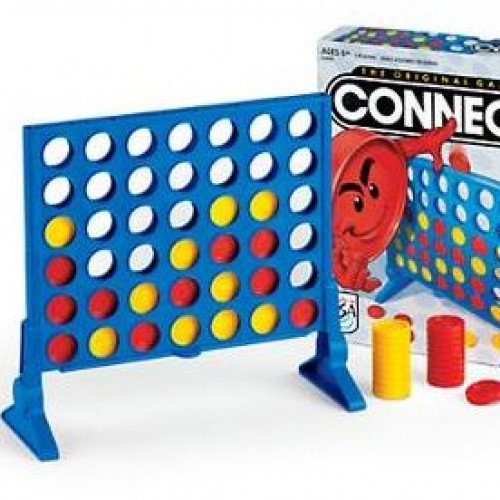BUL VS CONNECT FOUR

BUL
Bul (also called Buul, Boolik or Puluc) is a running-fight board game originating in Mesoamerica, and is known particularly among several of the Maya peoples of Belize and the Guatemalan highlands. It is uncertain whether this game dates back to the pre-Columbian Maya civilization, or whether it developed in the post-colonial era after the arrival of the Spanish conquistadores. Stewart Culin described the game in the 24th Annual Report of the Bureau of American Ethnology: Games of North American Indians published in 1907. R. C. Bell referred to the game in Board and Table Games from Many Civilizations. Both of these descriptions were based on the eyewitness accounts of others. Lieve Verbeeck, a linguist studying Mayan language, witnessed the modern version of the game being played by Mopan and Kekchi Maya in Belize It is not known exactly when the game was developed or what the original rules were as very few records survived the invasion by the conquistadors between the 15th and 17th centuries. Stewart Culin organised the games in his anthology into those he thought had an influence from Europe in their creation. Bul is not listed among these, and in his opinion the game must have developed before Europeans arrived in Central America. There are a variety of ways to play the game, as Verbeeck's account shows. The game could be played by two people, or by two equal-sized teams. The overall objective is to capture and subsequently kill the playing pieces of the opposition, so the game is in essence a war game. The playing area is divided into equal spaces using rods placed parallel to each other. The two players have control of a base at either end of the play area. The players take an even number of stones or figurines (or any suitable playing piece) and place them in their respective bases.
Statistics for this Xoptio

CONNECT FOUR
Connect Four (also known as Four Up, Plot Four, Find Four, Captain's Mistress, Four in a Row, Drop Four, and Gravitrips in the Soviet Union) is a two-player connection board game, in which the players choose a color and then take turns dropping colored discs into a seven-column, six-row vertically suspended grid. The pieces fall straight down, occupying the lowest available space within the column. The objective of the game is to be the first to form a horizontal, vertical, or diagonal line of four of one's own discs. Connect Four is a solved game. The first player can always win by playing the right moves. The game was first sold under the Connect Four trademark by Milton Bradley in February 1974. Connect Four is a two-player game with perfect information for both sides. This term describes games where one player at a time plays, players have all the information about moves that have taken place and all moves that can take place, for a given game state. Connect Four also belongs to the classification of an adversarial, zero-sum game, since a player's advantage is an opponent's disadvantage. One measure of complexity of the Connect Four game is the number of possible games board positions. For classic Connect Four played on 6 high, 7 wide grid, there are 4,531,985,219,092 positions for all game boards populated with 0 to 42 pieces. The game was first solved by James Dow Allen (October 1, 1988), and independently by Victor Allis (October 16, 1988).